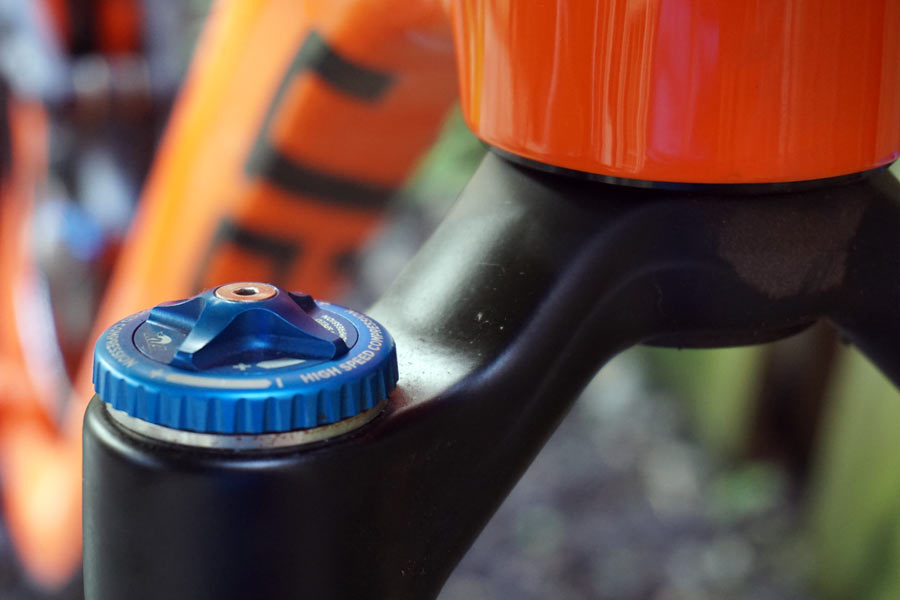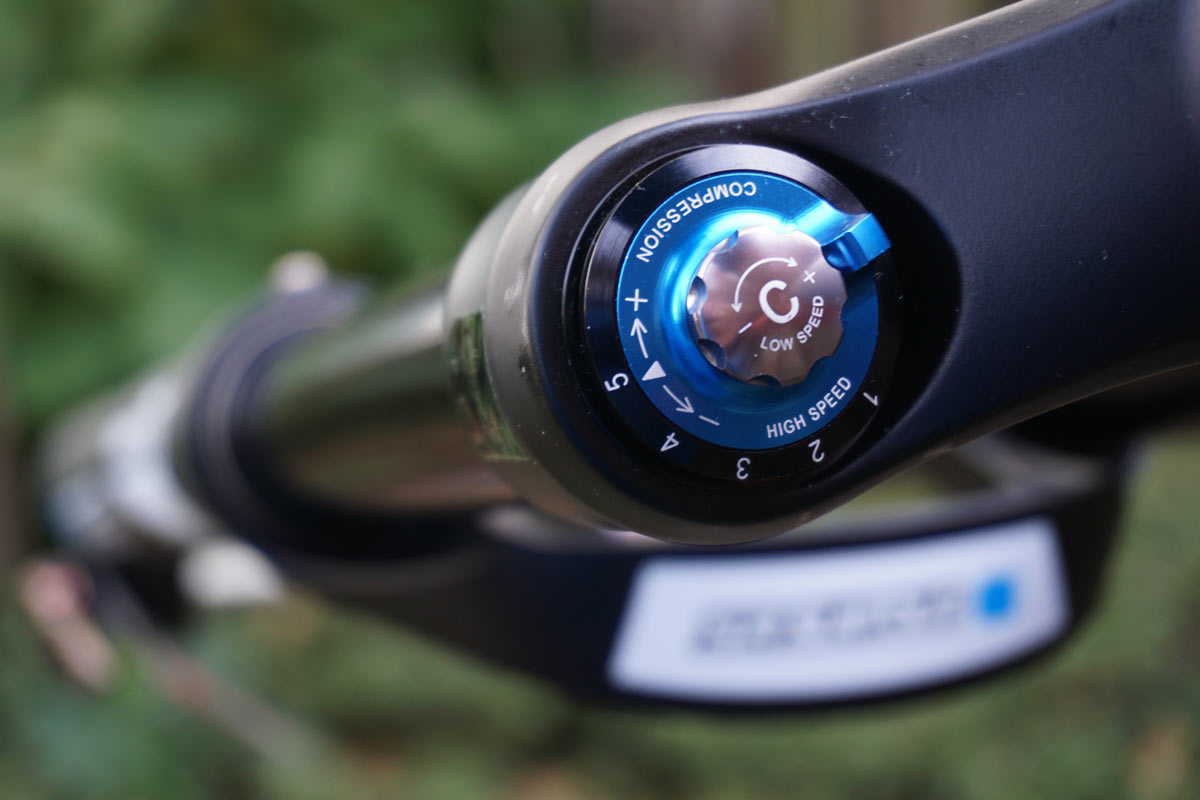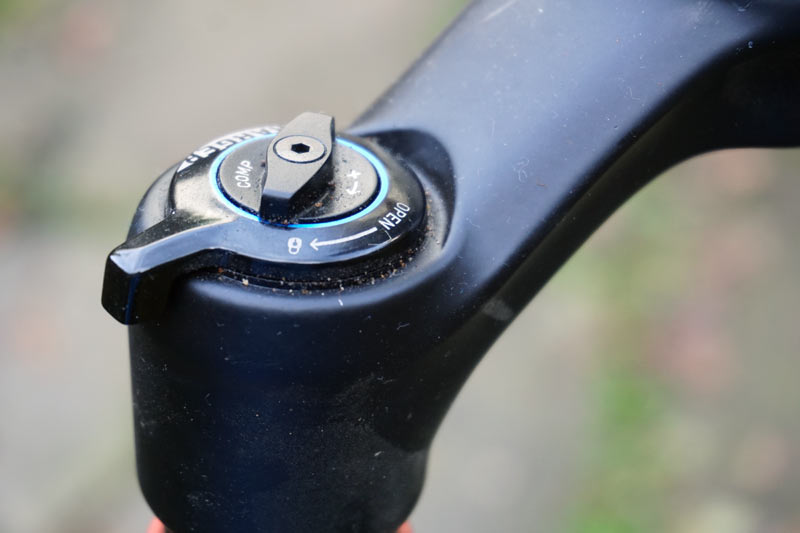In modern mountain bike suspension, compression damping is how you control the rate at which your shock compresses under force (an impact, you pressing down on it, etc.), helping you maintain control of the bike. It also helps limit compression under certain circumstances, usually under light forces, so it’s not bobbing up and down as you pedal.
To do this, there are two distinct damping circuits for compression, one for high speed and one for low speed. In most cases, these circuits control the speed of compression by routing oil through valves and ports or around shims. The design of such things and how to set them up are topics for another post; here we simply want to explain why you need both for proper suspension function. These control the rate at which your fork or shock compresses, either because it hits an obstacle or you’re pressing down on it as you pedal or move the bike under you.

WHAT’S THE DIFFERENCE BETWEEN HIGH & LOW SPEED COMPRESSION DAMPING?
Ace Draper, head technician at suspension tuning shop Manticore Bike, explains it like this: “Separate high and low speed controls typically use the velocity of the main piston (which is what’s pushing the oil through the circuits) to determine where the oil volume can pass the various ports inside the shock. Imagine swinging a tennis racket through the air. Now imagine swinging the same racket submerged in a swimming pool. Now imagine swinging a racket or paddle with no holes in it, submerged in a swimming pool. Many compression controls on the market today essentially restrict or reduce the flow of oil through ports or valves, causing the compression piston to slow down or feel firm upon compression.”
Without this damping, you’d simply blow through your travel, regardless of the type of hit the suspension is taking, and you’d have less control over the bike. There are two different circuits because different types of impacts move through the suspension at very different speeds. From here on, we’ll use “shock” to represent both the shock and fork as the principle is the same for both.
WHAT DOES LOW SPEED COMPRESSION DAMPING DO?
Low speed compressions happen when you’re pressing down on the shock, like when you stand up to pedal. Or when you’re riding over gentle rollers, berms or dips in the trail. The shock is simply absorbing your weight against gravity in a slow, controlled manner.
The idea is to support the combined weight of you plus the bike so it’s not bobbing through half the travel as you pedal across smooth, rolling terrain. The low speed compression circuit is like your shock’s first line of defense against unwanted compression, and adding a few clicks helps create more of a platform. The flip side is that reducing the amount of low speed compression can improve small bump sensitivity.
“Recent trends have everyone shopping for shocks with the most sensitive small bump compliance possible. This can be a nice feature for many riders on certain terrain,” says Draper. “However when riding smooth, firm, high speed terrain it can lead to some undesirable sensations – involuntary chatters, washy unsupported feeling, etc. In this scenario many riders will benefit from a few clicks of low speed compression to stabilize the front end at speed and increase sure footed confidence. We also have many customers who wish to have a firm feeling when climbing, which can also be achieved through increasing low speed compression.”
As with most things in life, there are compromises to be made, but it’s also acting as one small part of a bigger system that involves spring rate, air volume, etc., which goes beyond the scope of this article.
WHAT DOES HIGH SPEED COMPRESSION DAMPING DO?
High speed compressions happen when you hit a root, rock or drop off a ledge and the shock has to compress quickly to absorb the abrupt impact. When this happens, the oil flows very quickly and with enough force to bypass the low speed circuit. Most shocks design the low speed circuit to get out of the way, or provide alternate flow paths for the oil to go around it during high speed compressions.
The high speed circuit is also there to control the rate of compression. Without it, you’d be bottoming out your shock on almost every hit. Or, at the very least, it would compress extremely quickly up to the point where your spring rate ramps up, leading to an abrupt change in shock movement that could reduce your control of the bike.
We’ll dive into how you should be setting up your compression damping in the future. In the meantime, Draper gives us this food for thought:
The only real mistake you can make is to buy a shock with both controls and never experiment with them! Many customers purchase shocks with all possible controls, and immediately want to set them in one magic position for all conditions.
Stay tuned for an explanation of high and low speed rebound damping next week (hint: it’s the same, but different)!
The fun never ends. Stay tuned for a new post each week that explores one small suspension tech, tuning or product topic. Check out past posts here. Got a question you want answered? Email us. Want your brand or product featured? We can do that, too.

